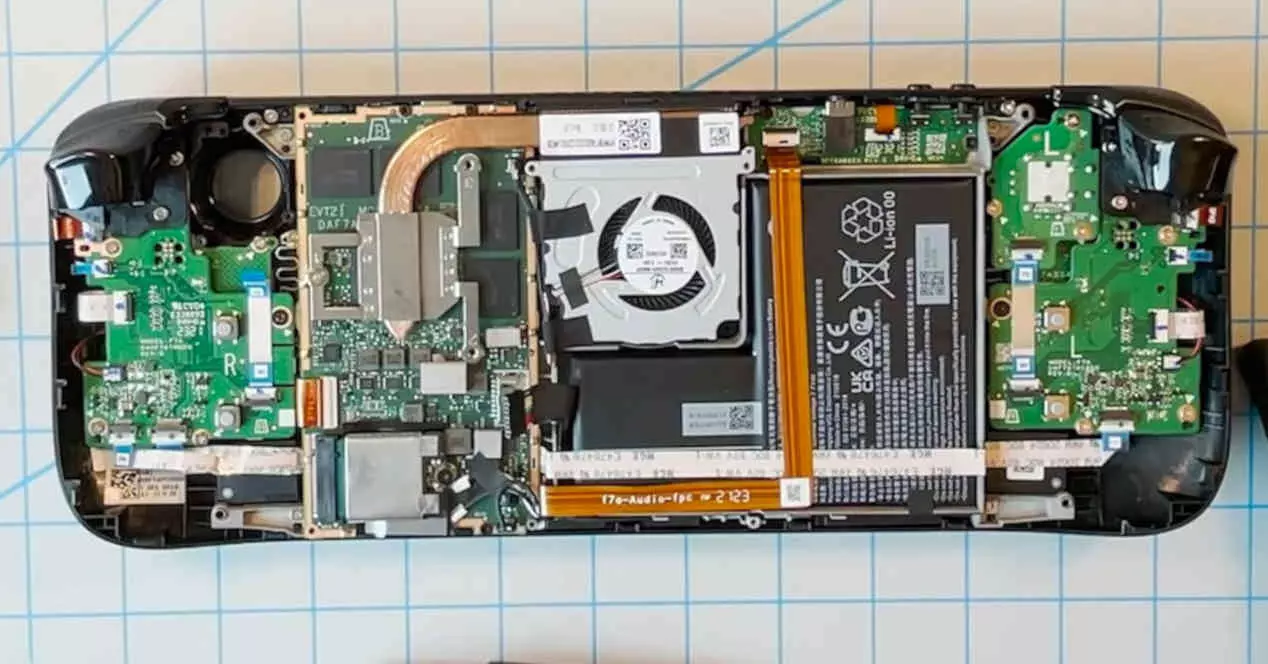
There is no doubt that the Steam Deck is a very appetizing product for doing something that until now has not been done with PC video games: giving them the same portability as on the console. Although it is not only interesting for these reasons, but for the fact of being the most powerful hardware of its kind to date by bringing an APU equipped with an AMD CPU with Zen 2 cores and a GPU with the RDNA 2 architecture.
All this makes Valve’s “console” the most powerful system to date among those that have its form factor, of which we already knew its external appearance, but thanks to a breakdown of the Steam Deck made by Valve itself we have been able to know the interior of his new proposal in terms of hardware.
Valve explodes the Steam Deck and shows us its interior
Through a video, which you can see above these lines, Gabe Newell’s company has made a Exploded to your Steam Deck so we can see how it’s your circuitry inside as well as the distribution of its components. Which has its share of humor, since as the video goes by it warns us of the problems and consequences of making a teardown to our unit, in addition to making it clear that the video model is still a pre-production prototype and not the final model that we will have in our hands.
And what are the new details that the breakdown of the Steam Deck brings us? First of all we find the fact that both the analog sticks and the circuitry that surrounds them have been designed from scratch at Valve, possibly to avoid the drift problem that affects other consoles.
As a second point they comment that the NVMe SSD included in the console has been selected to meet the hardware specifications. Valve gives the following reasons for not using a third-party unit:
- An SSD not provided by Valve may have higher energy consumption, leading to overheating and affecting battery life.
- They also talk about the effect of electromagnetic interference and it is that whoever performs the disassembly of the console explains how the SSD is close to the wifi and bluetooth radio and therefore it has been designed and tested not to interfere with the console’s wireless module.
- Although the main reason they give is the fact that the heat sink that is to help in cooling the solid state drive, the APU and the system memory share the same mounting screw. So doing so may compromise the heat dissipation ability of the Valve console.
As a last point they have confirmed that the 64 GB model has been updated in terms of storage speed, since it already uses an eMMC as a unit Valve has decided to use an M.2 connection and therefore place an NVMe SSD, so the base model will have the same bandwidth as its bigger brothers.




